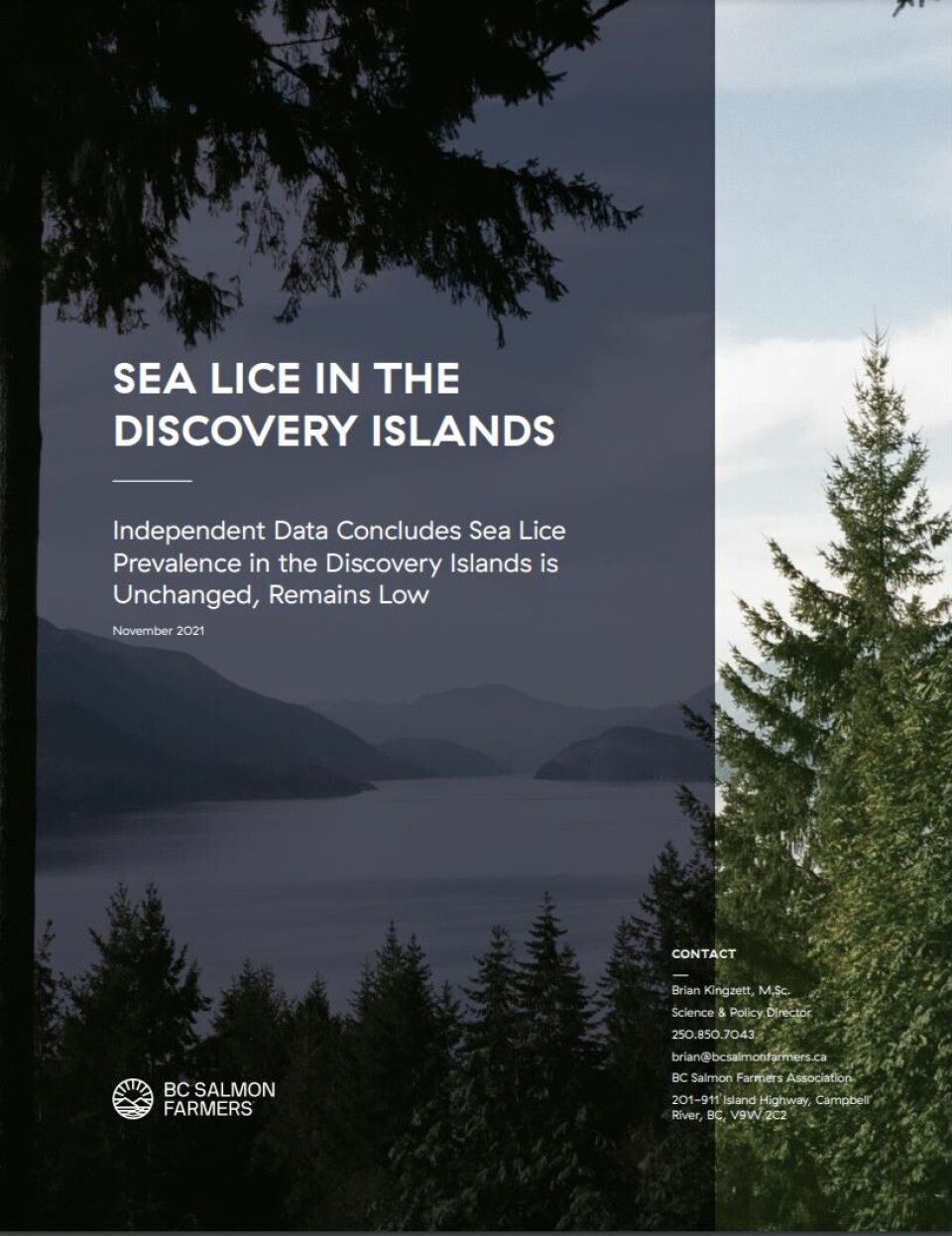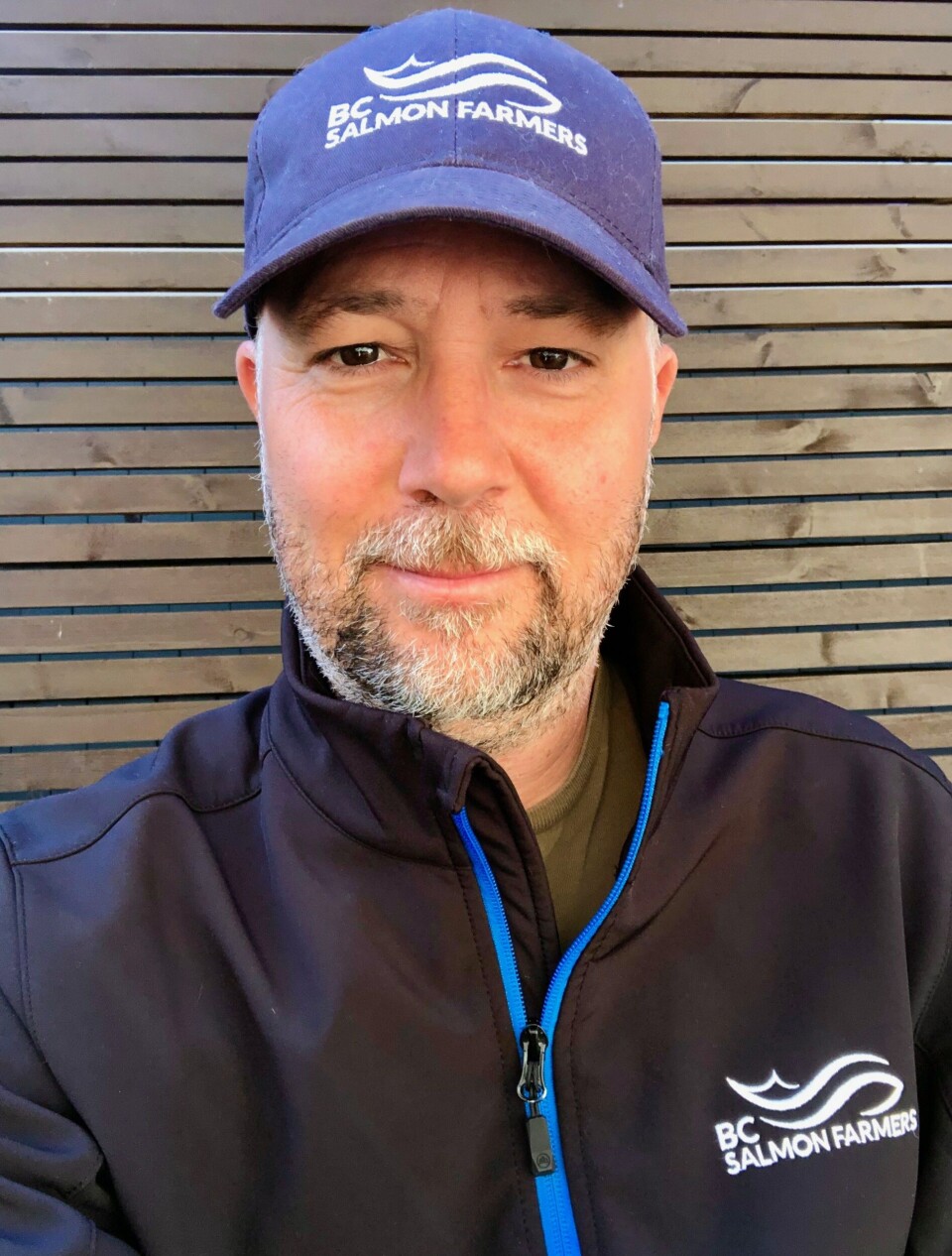
BC salmon farm closures ‘haven’t altered lice levels’
A report analysing the results of five years of independent sea lice monitoring in the Discovery Islands region of British Columbia has concluded that lice levels remained low both prior to and after the Canadian government’s December 2020 decision to close 19 salmon farms.
The decision was taken by the then fisheries minister Bernadette Jordan after discussions with First Nations who claimed the farms were sources of lice and disease that were affecting native wild salmon. Although the farms do not have to be out of the water until June 2022, Jordan blocked any new smolt transfers into the sites.
“Five years of sea lice monitoring has demonstrated that sea lice levels have been low with most out-migrating salmon not infected by sea lice. Additionally, we did not see sea lice levels change after decreased production of salmon farming in the region,” said Brian Kingzett, science and policy director for the BC Salmon Farmers’ Association (BCSFA).

Below thresholds
Sea lice on salmon farms are monitored and treated under both the Department of Fisheries and Oceans Canada (DFO) regulation and individual company veterinary supervision. Analysis by DFO demonstrates that sea lice levels on the Discovery Islands region salmon farms have been below DFO regulatory thresholds during salmon out-migrations for all but two months over the past 10 years.
Additionally, a judge-led inquiry (the Cohen commission) in 2012 determined that sea lice were not a concern for out-migrating Fraser River Sockeye salmon, and research published since has shown that juvenile salmon spend very little time migrating past salmon farms.
Large job losses
In a press release, the BCSFA said it should also be noted that the decommissioning of salmon farms, while not showing a measurable change to sea lice levels in the Discovery Islands region, has and will see the elimination of 24% of salmon farming production in BC, and the loss of nearly 1,500 full-time jobs in both Indigenous and non-Indigenous rural coastal communities.
BC salmon farmers have invested millions of dollars in robust, innovative technology to mitigate and manage sea lice and are continuously looking at ways in which innovation can be adapted to improve overall operations, the BCSFA said.
Examples of this include nearly $100 million invested over the last three years in new vessels designed to remove sea lice from farm-raised salmon through mechanical means, fresh water, or hydrogen peroxide baths. All these technologies can remove and capture lice and eggs for responsible disposal on land – removing them from the ecosystem and helping to lower the overall lice population in an area.

Rigorous science
“BC salmon farmers are committed to responsible production of low carbon sustainable food production that supports the blue economy, and Canada’s aggressive carbon reduction targets,” said BCSFA executive director John Paul Fraser.
“We are an industry that operates using rigorous science to support our practices. Irresponsible claims by activists have led to public confusion and have contributed to decisions which ignore science such as the Discovery Islands decision of 2020.
“As salmon farmers, we call on DFO and our political leaders to look deeper and focus efforts on climate action and habitat restoration rather than use salmon farming as a scapegoat for political goodwill, which science has demonstrated will not provide tangible benefits for wild salmon populations.
“The solution is complex, and like we saw at the recent COP26 climate change conference, will require the cooperation of many industries, including salmon farmers – to support the solution.”
Read the report here.























































